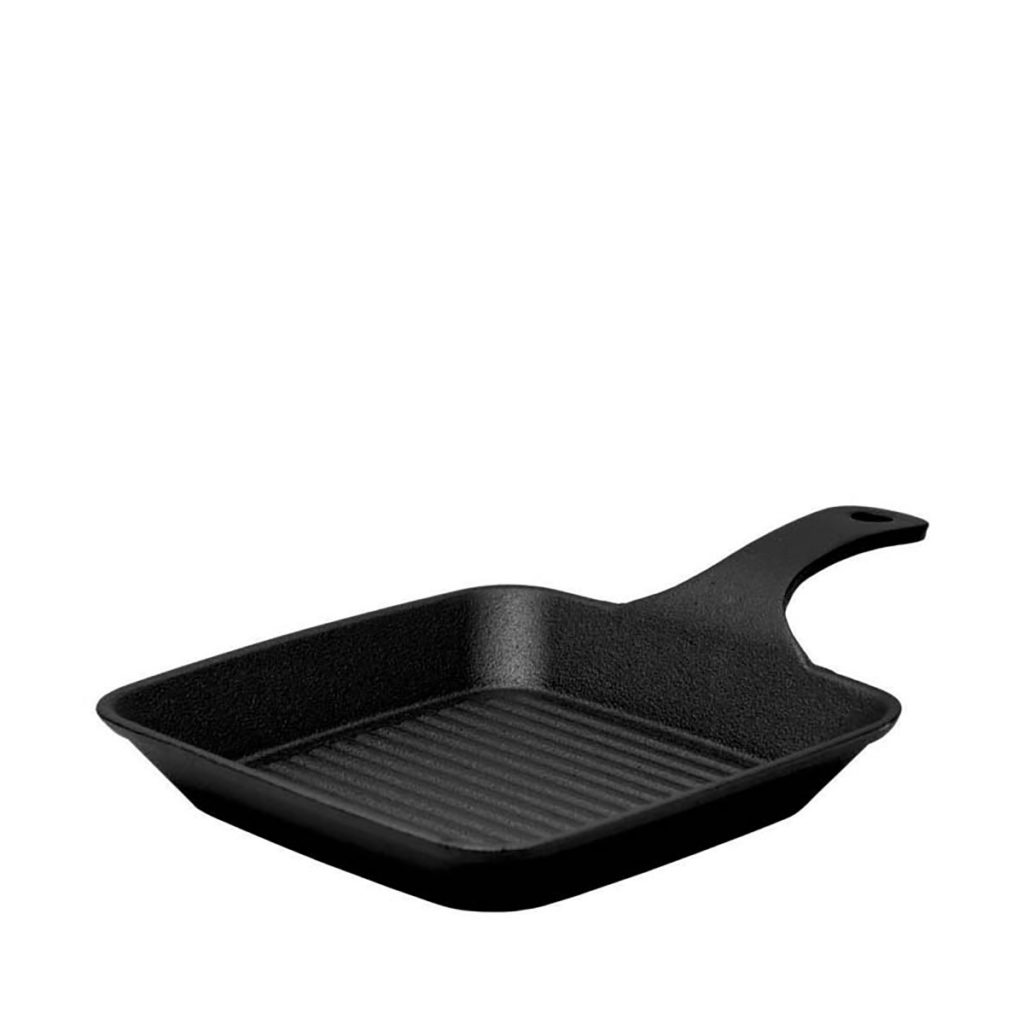
Purchasing, receiving or inheriting cast iron cookware comes with great responsibility — proper care. Thankfully, there are various methods you can follow to clean cast iron cookware properly including the traditional salt method and the controversial soap method. It’s important that you find one that works best for you because, if properly taken care of, cast iron cookware can last several lifetimes and be passed on from generation to generation. The best part of proper care is that the longer your cast iron pot or pan has been in use and the more often it’s been reseasoned, the more delicious flavour you get out of it. In this guide, we discuss several methods at great length as well as how to reseason your cast iron products.
What is Cast Iron Cookware?
Cast iron cookware has been used for centuries by people from around the world. Seeing as these pots, pans, kettles, skillets and dishes are made from 97-99% iron (a commonly found material), they were and continue to be some of the most popular cookware choices. Cast iron is also exceptionally durable and, with the right care, can last for generations.
How to Clean Cast Iron Cookware
Here are a few methods you can follow to clean cast iron cookware properly. Read on to discover how to keep your pot and pans in a good condition for years to come.
Boiling Water
If your cookware has a lot of food particles stuck to it, this method may be your best bet. Just make sure whatever you are planning to wash has enough depth to hold water.
- Put the item you want to wash on the stove, fill with some water and bring to the boil.
- After a few minutes, the food particles should begin to float to the surface.
- Use an appropriate kitchen utensil, like a spatula, and scrape off the extra-clingy food particles.
- Allow the water to cool and throw it down the drain along with the food residue
- Rinse out the cookware with hot water
- Use dry paper towel to wipe away any remaining dirt.
Salt and Water
Salt methods are typically pro chefs’ preferred choice seeing as salt is used to keep the surface of the cast iron cookware smooth and seasoned. Kosher salt is particularly coarse and thus acts as an abrasive cleaning solution for stuck-on food particles.
- Cooldown the cookware but not completely.
- Cover the surface with a generous helping of coarse kosher salt.
- Add just a small amount of hot water to the surface so that the salt forms a paste-like texture
- Use a sponge to scrape all around the cookware.
- Rinse with hot water to remove all salt and food particles. Repeat if necessary.
Salt Without Water
Some people believe cast iron cookware should never come into contact with water and thus prefer this method to keep their precious pots and pans clean.
- Cover the surface of the cookware with a generous helping of coarse kosher salt.
- Use a paper towel to rub the salt into the stuck-on food particles.
- Add more salt and continue to scrub.
- Once satisfied with the results, use a paper towel to wipe off all residue and dump contents into the trash.
Soap and Water
In some circles, washing cast iron cookware with soap is seen as sacrilege because soap can potentially remove the flavour-enhancing seasoning layer of your pot or pan. However, if you follow this method correctly, it can be an excellent way to clean new cookware and remove rust.
- Put a tiny amount of non-abrasive soap or detergent in the middle of your cookware.
- Add a small amount of hot water and scrub the surface with steel wool, a scrubber or sponge.
- Rinse with hot water.
- Use a sponge or non-abrasive pan and scrub once more with soap.
- Rinse again.
How to Reseason Cast Iron Cookware
Though keeping your cast iron cookware clean is important, what you do afterward is what really determines its longevity. After you have cleaned your pots and pans make sure to rid them of all moisture and reseason their surface.
Cast iron can easily rust so make sure it is bone dry before storing it away. We recommend you set your pots and pans on the stove or in the oven at 230-260°C to ensure that all water is evaporated. Once the moisture has been removed, take a paper towel and rub a neutral oil or shortening over the entire pot or pan. Then, take another paper towel and wipe away the excess oil. Place the pot or pan on the stove until it begins to smoke.
Care Tips
Follow these care tips to increase the life of your cast iron cookware.
- Make sure it’s always bone dry before storing. If you leave water in the pot or if you soak it, it can rust.
- Avoid warping by cooling the pot or pan before you bring it into contact with cold water.
- Always wipe away excess oil when seasoning otherwise it will be left with a sticky surface.
- Store without a lid as it can trap moisture inside the pot or pan.
- If you are cleaning the pot or pan in a sink, line it with towels to prevent the bottom from scratching.
- If you use an oven to reseason your pot or pan, make sure it is as hot as possible because it must go past smoking point to smoothly bond with the surface.
- When using the oven, place your cookware upside down and place foil underneath to catch any oil that might drip off during the process.




